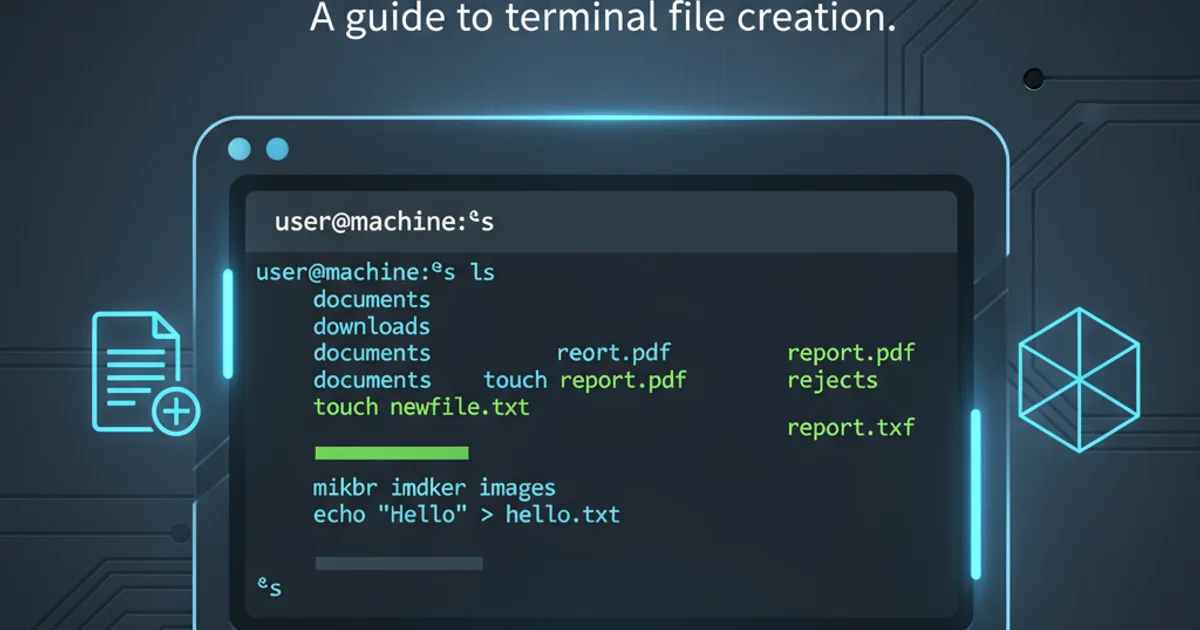Django Server Error: port is already in use
Categories:
Resolving 'Port Already In Use' Errors in Django Development

Learn how to diagnose and fix the common 'port is already in use' error when running your Django development server, ensuring a smooth development workflow.
Encountering the 'port is already in use' error is a common hurdle for Django developers, especially when starting or restarting the development server. This error indicates that another process on your system is currently occupying the network port that Django's runserver command attempts to bind to. While seemingly straightforward, identifying and resolving the culprit process can sometimes be tricky. This article will guide you through understanding why this error occurs, how to identify the process holding the port, and various methods to free it up, allowing your Django application to run successfully.
Understanding the 'Port In Use' Error
Every network application that listens for incoming connections needs to bind to a specific port number on your machine. Django's development server, by default, uses port 8000. When you try to start the server, if another application (which could even be a previous, crashed instance of your Django server) is already using port 8000, the operating system will prevent Django from binding to it, resulting in the 'port is already in use' error. This is a safety mechanism to prevent multiple applications from trying to use the same communication channel simultaneously, which would lead to conflicts and data corruption.
flowchart TD
A[Start Django Server (runserver)] --> B{Is Port 8000 Free?}
B -- Yes --> C[Django Server Starts Successfully]
B -- No --> D[Operating System Error: Port In Use]
D --> E[Identify Process Using Port]
E --> F[Terminate Process]
F --> AFlowchart illustrating the 'Port In Use' error resolution process.
Identifying the Culprit Process
The first step in resolving the error is to find out which process is currently occupying the desired port. The method for doing this varies slightly depending on your operating system. We'll cover the most common approaches for Linux/macOS and Windows.
Linux / macOS
On Unix-like systems, you can use the lsof (list open files) or netstat commands. lsof is generally more user-friendly for this specific task.
To find processes using port 8000:
lsof -i :8000
This command will output a list of processes, including their PID (Process ID), that are listening on port 8000. Look for the PID column. If lsof is not available, you can use netstat:
netstat -tulnp | grep 8000
Note: netstat -p requires root privileges, so you might need to prepend sudo.
Windows
On Windows, you can use the netstat command in the Command Prompt or PowerShell.
First, find the PID associated with port 8000:
netstat -ano | findstr :8000
This will show you the listening process and its PID in the last column. Once you have the PID, you can find the process name using tasklist:
tasklist | findstr <PID>
Replace <PID> with the actual process ID you found. Alternatively, you can directly kill the process using its PID.
Terminating the Process
Once you have identified the PID of the process using the port, the next step is to terminate it. Be cautious when killing processes, especially if you are unsure what they are. Killing critical system processes can lead to instability.
Linux / macOS
Use the kill command followed by the PID:
kill <PID>
If the process doesn't terminate with a standard kill, you might need to use kill -9 for a forceful termination (use with caution):
kill -9 <PID>
Replace <PID> with the actual process ID.
Windows
Use the taskkill command with the /PID option:
taskkill /PID <PID> /F
The /F flag forces the termination of the process. Replace <PID> with the actual process ID. Alternatively, you can use the Task Manager: press Ctrl+Shift+Esc, go to the 'Details' tab, sort by PID, find the process, right-click, and select 'End task'.
kill <PID>) before resorting to a forceful one (kill -9 <PID> or taskkill /F). Forceful termination can lead to unsaved data or corrupted files if the process was in the middle of an operation.Alternative Solutions
If you frequently encounter this issue or prefer not to terminate processes, there are other ways to work around the 'port in use' error.
1. Specify a Different Port
You can tell Django to use a different port when starting the development server. This is often the quickest solution if you just need to get your server running.
python manage.py runserver 8001
This command will start your Django server on port 8001. You can choose any available port number.
2. Check for Multiple Django Instances
Sometimes, the 'culprit' is another instance of your own Django server that didn't shut down cleanly. Ensure you only have one runserver process active for your project at any given time. If you're using an IDE, make sure it's not trying to run multiple instances in the background.
3. Reboot Your System
As a last resort, a system reboot will clear all active processes and free up all ports. While not an ideal solution for frequent occurrences, it's a guaranteed way to resolve the issue if you're stuck.
runserver. Instead, deploy your Django application with a production-ready web server like Gunicorn or uWSGI, fronted by Nginx or Apache, which handle port management and process supervision more robustly.